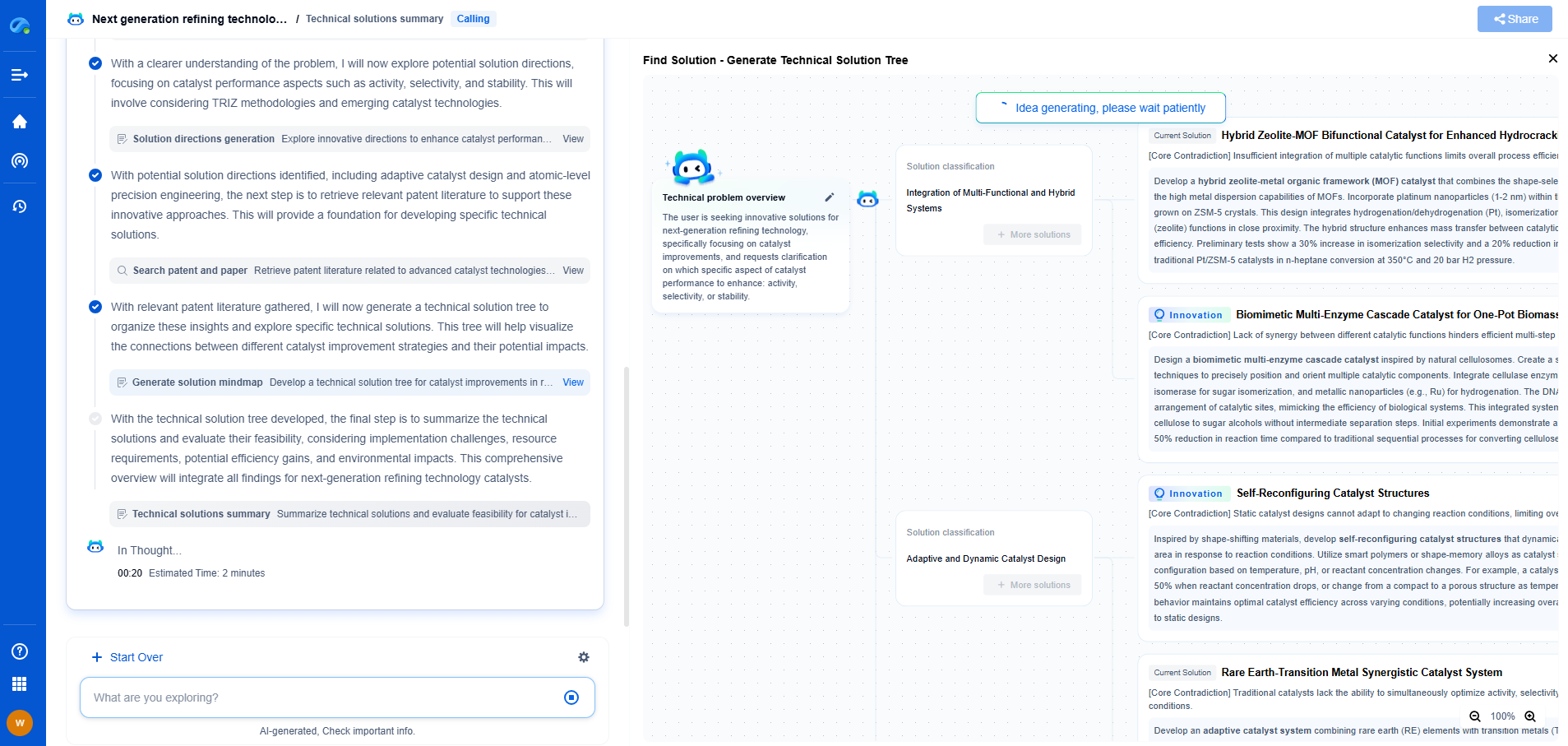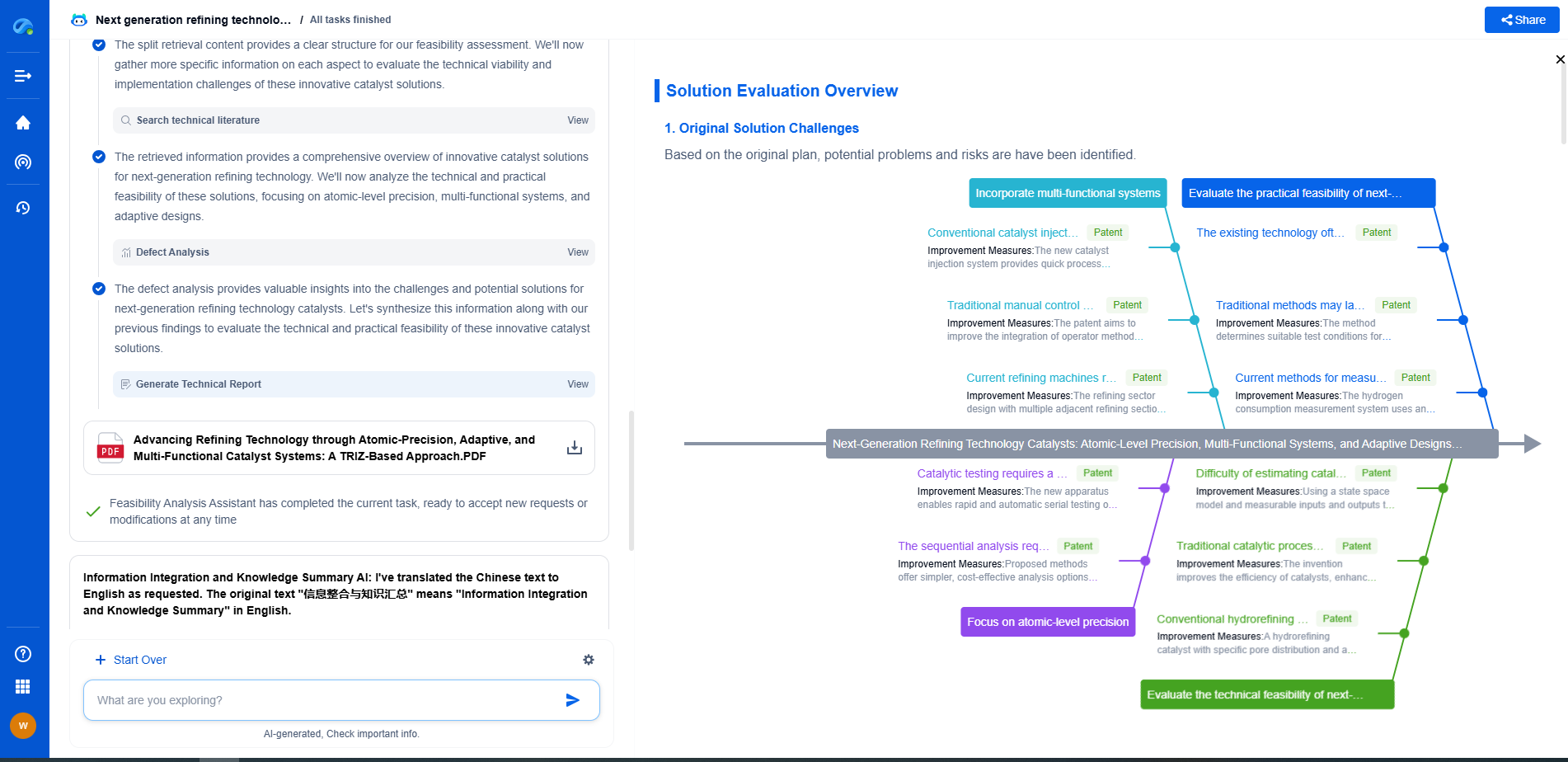Latency Optimization for AR Face Filters on Mobile Devices
JUL 10, 2025 |
Understanding Latency in AR Face Filters
Latency is the delay between an input action and the resulting output display. In AR face filters, latency can manifest as lag in applying the filter after the camera has captured the user's face. This delay can be attributed to the processing time required for face detection, mapping the filter, and rendering the output. High latency can lead to a disjointed experience, making it essential to understand the factors contributing to latency in AR applications.
Factors Contributing to Latency
Several factors can affect the latency of AR face filters on mobile devices:
1. **Hardware Limitations**: Mobile devices have varying levels of processing power, and older models may struggle to handle the demands of real-time AR rendering efficiently.
2. **Network Connectivity**: Some AR applications rely on cloud computing for processing, which involves data transfer over the internet, introducing network latency.
3. **Software Optimization**: The efficiency of the algorithms used for face detection and filter rendering can also impact latency. Poorly optimized software can result in higher processing times.
Strategies for Latency Optimization
To minimize latency and enhance user experience, developers can implement several strategies:
1. **Utilize On-Device Processing**
- Shift processing tasks from the cloud to the device where possible. By utilizing the device’s GPU for rendering and computation, you can reduce the reliance on network connectivity, thus minimizing network-induced latency.
2. **Optimize Face Detection Algorithms**
- Use lightweight and efficient algorithms for face detection. Techniques such as single-shot multi-box detectors (SSD) or MobileNets can help in reducing the processing time without compromising accuracy.
3. **Implement Mask Generation Techniques**
- Pre-generate and cache masks for frequently used filters. This approach reduces the time required to render the filter, as the application can quickly apply pre-generated assets rather than generating them from scratch every time.
4. **Leverage Machine Learning Models**
- Employ optimized machine learning models that are specifically designed for mobile environments. Tools like TensorFlow Lite and PyTorch Mobile offer models that are both efficient and lightweight, suitable for real-time applications on mobile devices.
5. **Reduce Data Transfer**
- Minimize the amount of data that needs to be transferred over the network for cloud-based processing. Compress data where possible and only send essential information to reduce the time spent in data transmission.
6. **Conduct Load Testing**
- Regularly test the application under various conditions to identify and address latency issues. Load testing can help in understanding how the application performs under different network conditions and device capabilities, allowing for proactive optimization.
Enhancing User Experience
Minimizing latency is not only about technical optimization but also about improving the overall user experience. Users should be provided with feedback and interactive elements that keep them engaged even if slight delays occur. Ensuring that the user interface is responsive and intuitive can greatly enhance the perception of speed and efficiency.
Conclusion
Optimizing latency for AR face filters on mobile devices is a multi-faceted challenge requiring a combination of hardware, software, and network strategies. By focusing on on-device processing, optimizing algorithms, leveraging mobile-friendly machine learning models, and reducing data transfer, developers can significantly reduce latency and improve user experience. As technology continues to advance, these optimizations will become increasingly essential in delivering seamless and engaging AR experiences to mobile users worldwide.
Image processing technologies—from semantic segmentation to photorealistic rendering—are driving the next generation of intelligent systems. For IP analysts and innovation scouts, identifying novel ideas before they go mainstream is essential.
Patsnap Eureka, our intelligent AI assistant built for R&D professionals in high-tech sectors, empowers you with real-time expert-level analysis, technology roadmap exploration, and strategic mapping of core patents—all within a seamless, user-friendly interface.
🎯 Try Patsnap Eureka now to explore the next wave of breakthroughs in image processing, before anyone else does.
- R&D
- Intellectual Property
- Life Sciences
- Materials
- Tech Scout
- Unparalleled Data Quality
- Higher Quality Content
- 60% Fewer Hallucinations
Browse by: Latest US Patents, China's latest patents, Technical Efficacy Thesaurus, Application Domain, Technology Topic, Popular Technical Reports.
© 2025 PatSnap. All rights reserved.Legal|Privacy policy|Modern Slavery Act Transparency Statement|Sitemap|About US| Contact US: help@patsnap.com

